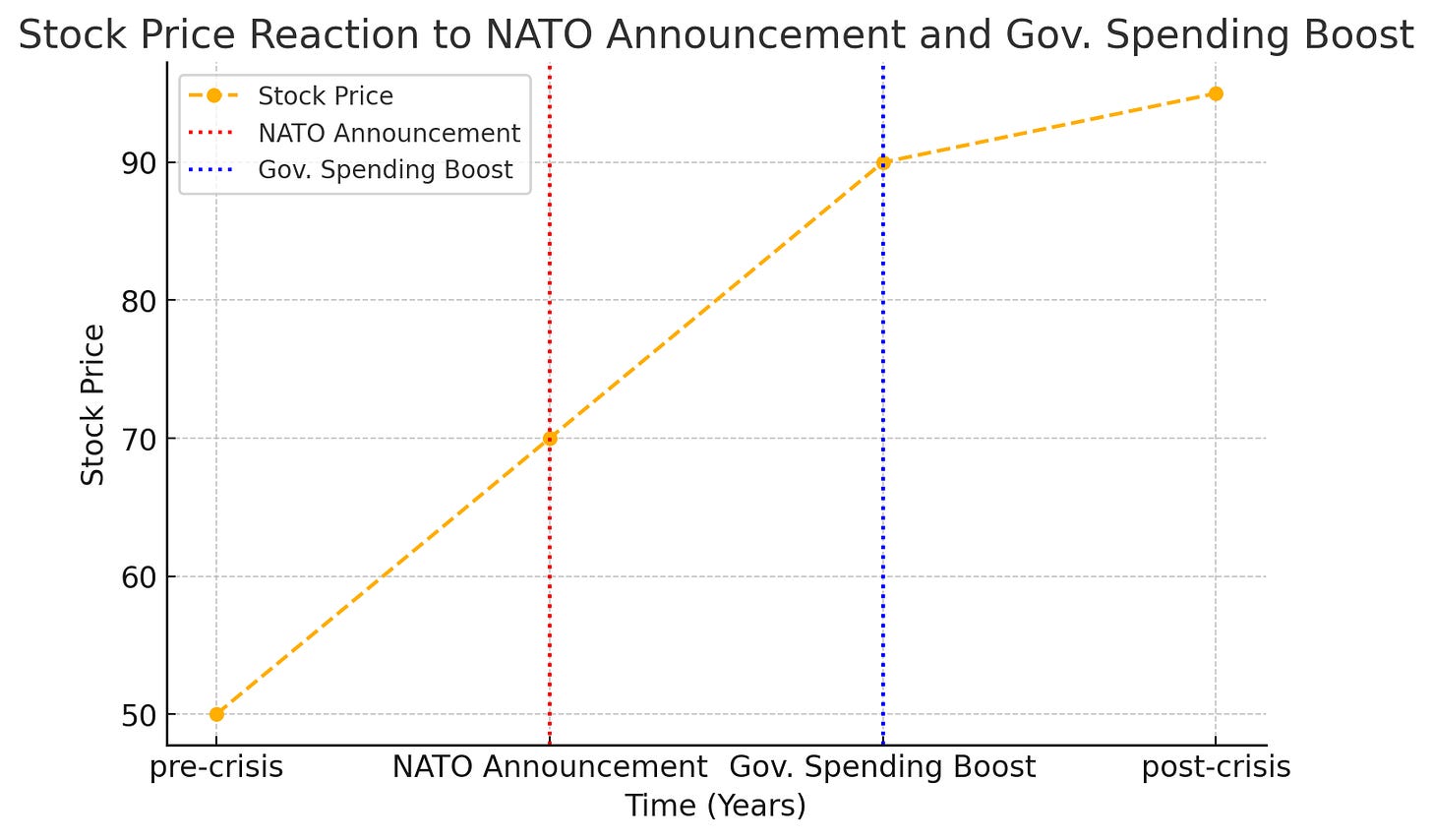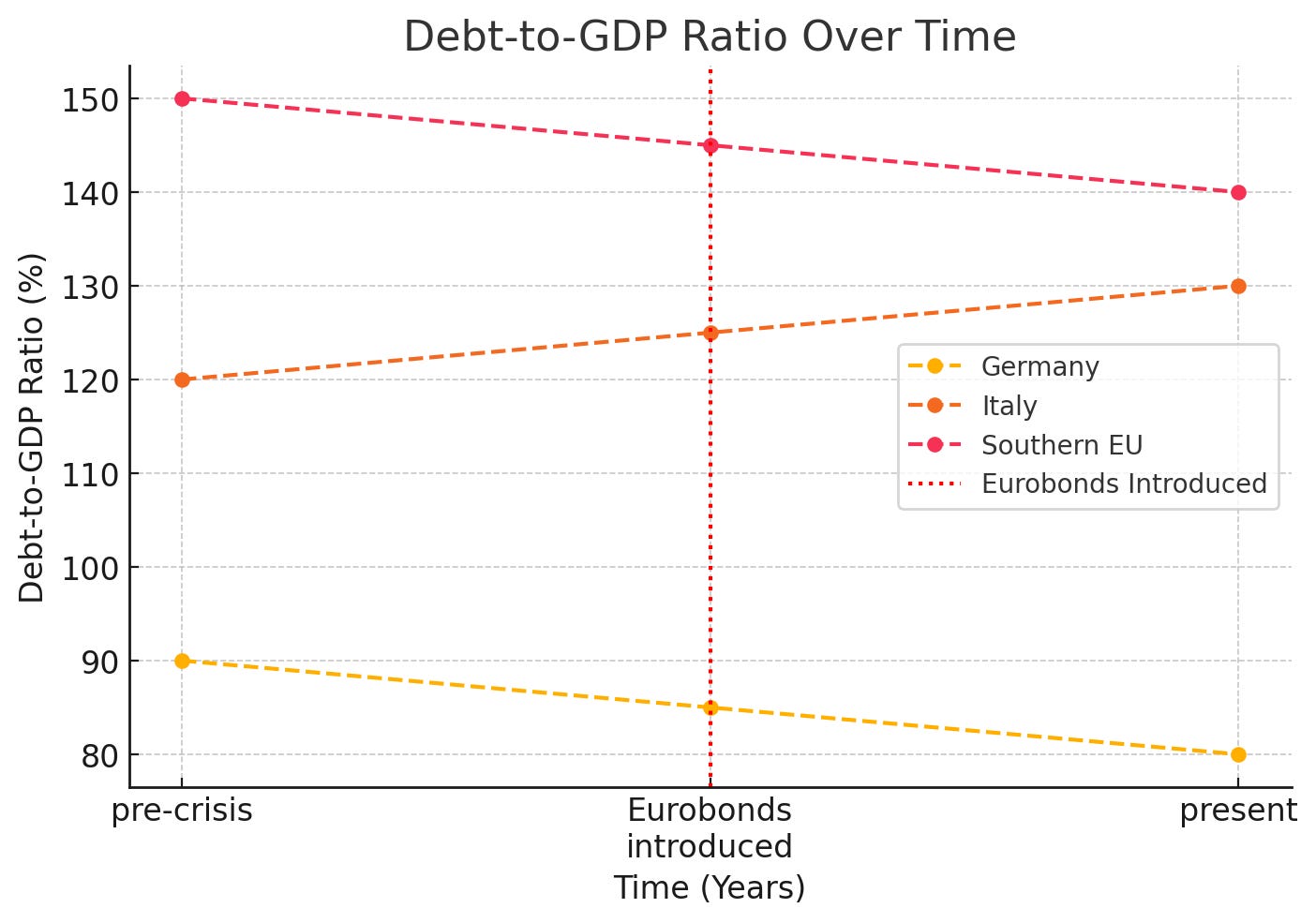[Intel Report] Defense, debt, and crypto on the brink
Prepare for a high-stakes showdown as superpowers clash and markets teeter on the brink
Table of content:
Introduction.
The multipolar world order.
Defense spending bonanza—aka follow the money.
The Eurozone’s fiscal rollercoaster: Debt, deficits, and desperation.
The $LIBRA catastrophe breakdown.
Introduction
Recent events—from high-stakes speeches at the Munich Security Conference to unexpected presidential tweets about cryptocurrencies—underline the fact that global politics and financial markets are inextricably linked. Whether it’s defense spending, fiscal policy in Europe, or digital asset scandals, every headline can have a profound impact on your investments.
Let’s begin by exploring the new world order, where power isn’t concentrated in one or two hands but spread across multiple competing centers of influence.
The multipolar world order
Multipolarity means global power is now divided among several key players—the U.S., China, the European Union, Russia, and emerging markets. Each region’s policy decisions can send ripples across different sectors of the market.
Major power blocs and their market impact:
Diversification across these blocs is critical. When one region falters, others may provide stability.
If the Cold War had a theme park, 2025’s defense budgets would be its rollercoaster. The U.S. is strong-arming NATO allies to boost spending to 3% of GDP, while Trump casually floats 5%—because why negotiate when you can meme?
Now that we have a grasp on multipolarity, let’s examine how shifts in defense spending can create a bonanza for specific stocks.
Defense spending bonanza—aka follow the money
In uncertain times, governments often turn to increased defense spending. For investors, this can be a golden opportunity to benefit from rising contracts and orders. Recent global tensions have led to notable surges in defense stocks.
Top defense stock performances (2025 YTD):
Why defense stocks arre the new safe haven—forget gold, buy missiles:
Lockheed Martin: Currently trading at approximately $427.16, reflecting investor confidence amid rising military orders. The F-35 program alone accounts for a significant portion of its revenue, with European nations scrambling to modernize their air forces.
Rheinmetall: Germany’s defense giant is riding high on increased tank production and U.S. investment inflows. The Leopard 2 tank is becoming the must-have accessory for European armies.
BAE Systems: Despite Brexit-induced political turbulence, BAE Systems continues to thrive thanks to consistent demand from NATO allies. Its diversified portfolio, including naval and cyber defense systems, ensures steady growth.
As you see, the impact is huge:
Let's look at the market impact in more detail. How much money is on the table?
U.S. defense budget: Expected to hit $1 trillion by 2026, driven by bipartisan support for military modernization.
European defense: Germany alone plans to allocate €112.7 billion to its military over the next five years.
Emerging markets: Countries like India and South Korea are also ramping up defense spending, creating opportunities for global arms exporters.
While defense spending offers clear opportunities, the fiscal instability in the Eurozone presents a different kind of challenge.
The Eurozone’s fiscal rollercoaster: Debt, deficits, and desperation
The Eurozone's fiscal landscape is as turbulent as a rollercoaster ride in a theme park. With soaring debt and deep deficits, European governments are scrambling to balance budgets amid crisis and reconstruction. The bloc is bypassing debt rules to fund defense, green tech, and Ukraine’s €450 billion reconstruction bill—managed by BlackRock, because who needs democracy when you have asset managers?
Wait, wait! This game is pretty weird, the chain of events is like: Taxpayers → Eurobonds → BlackRock → Ukrainian Reconstruction → ??? → Profit 😬
Debt is the New Black. Rising debt levels can create both risk and opportunity. Investors should monitor government bonds and policy changes carefully. This graph would reveal a steep upward trend in debt levels, underlining the urgent need for fiscal reforms.
Bold moves:
Green tech or bust: Pouring €200 billion into wind farms that may or may not work.
Farmers vs. politicians: CAP subsidies slashed by 40%, sparking tractor protests. Honk if you hate tanks!
Next, let’s explore Ukraine’s potential EU membership—a move that might appear as a financial time bomb for European fiscal stability.
Ukraine’s EU membership
Is this a financial bomb!? Ukraine’s potential EU membership is like inviting a friend with maxed-out credit cards into your savings group—it comes with significant risks and costs. The integration of Ukraine would require massive subsidies and structural reforms, which could strain EU finances:
€100 billion in annual subsidies—redirected from farmers.
€450 billion for reconstruction—funded by eurobonds.
EU budget shifts—2026 Projections:
The EU might need to reallocate funds drastically, impacting sectors differently. Increased defense spending could benefit related stocks, while cuts in agricultural subsidies might hurt local industries.
EU-Ukraine integration:
Ukraine's EU application
⬇
Negotiation & funding allocation
⬇
Structural reforms & integration]
⬇
Long-term stability vs. short-term fiscal strainThe EU is gambleing, Ukraine’s membership could transform the EU landscape, but only if the fiscal burden is managed carefully.
Shifting gears, let’s now delve into the volatile world of cryptocurrency, where even a presidential tweet can send markets into chaos. I couldn't leave this part out, because of the $4.5B that have left the market in such a short time, unconventional geopolitics!!!










